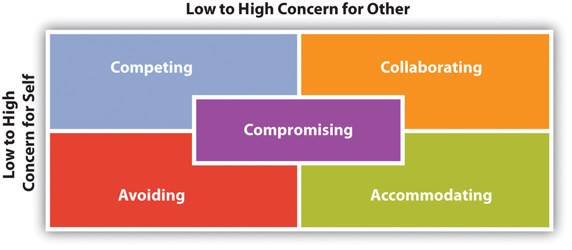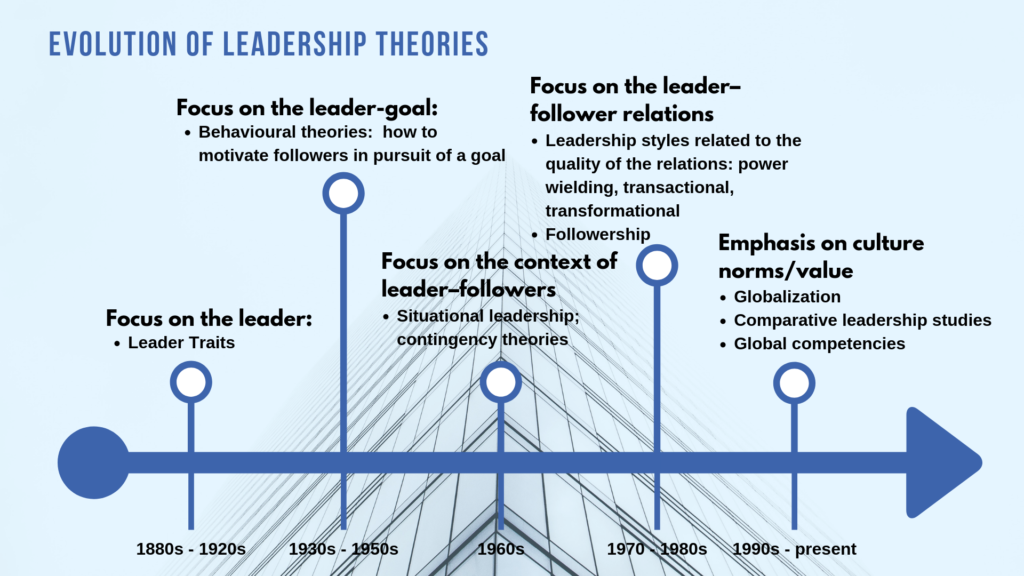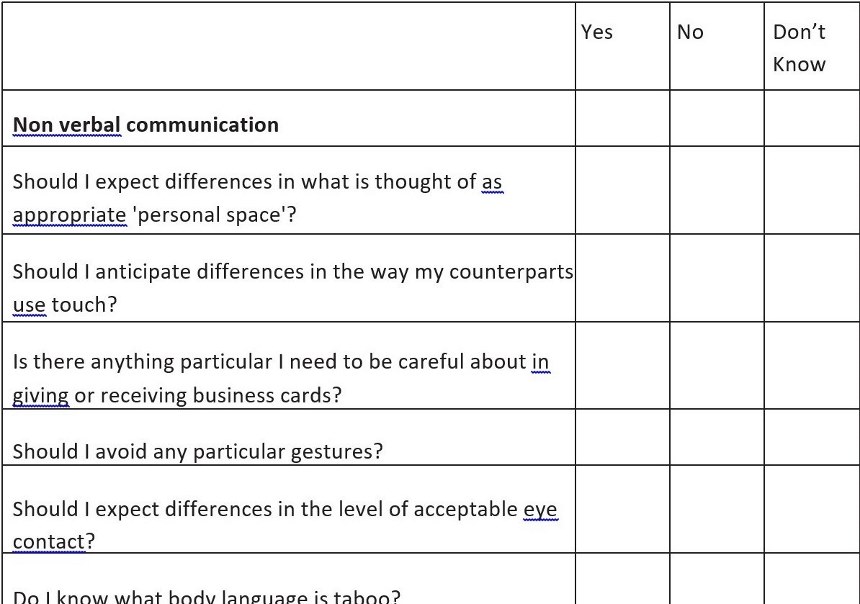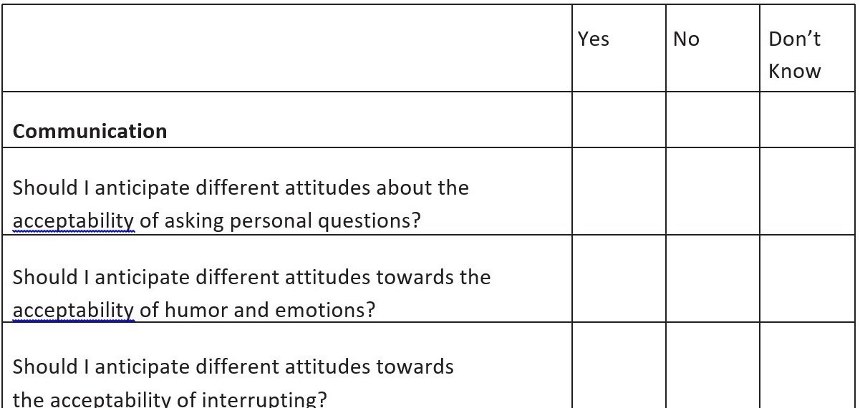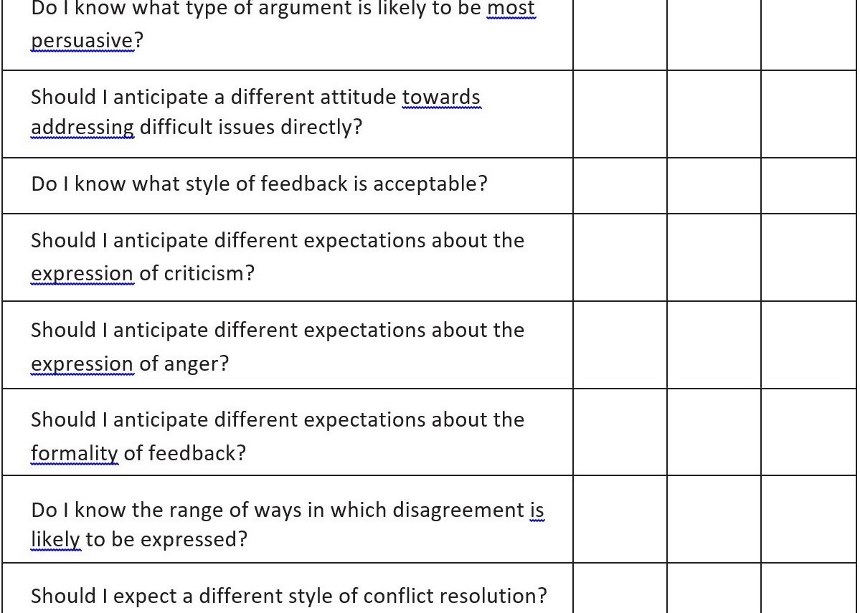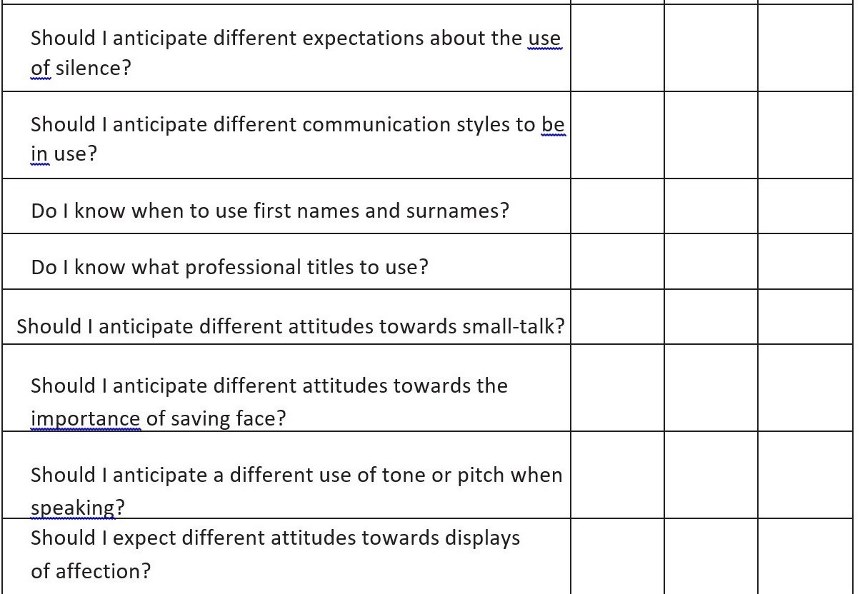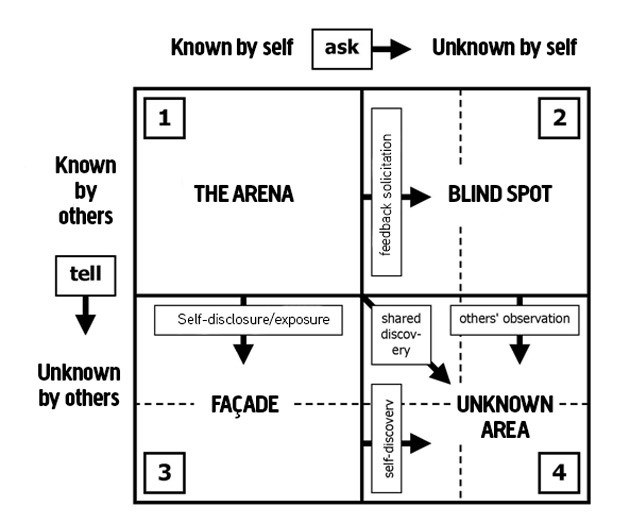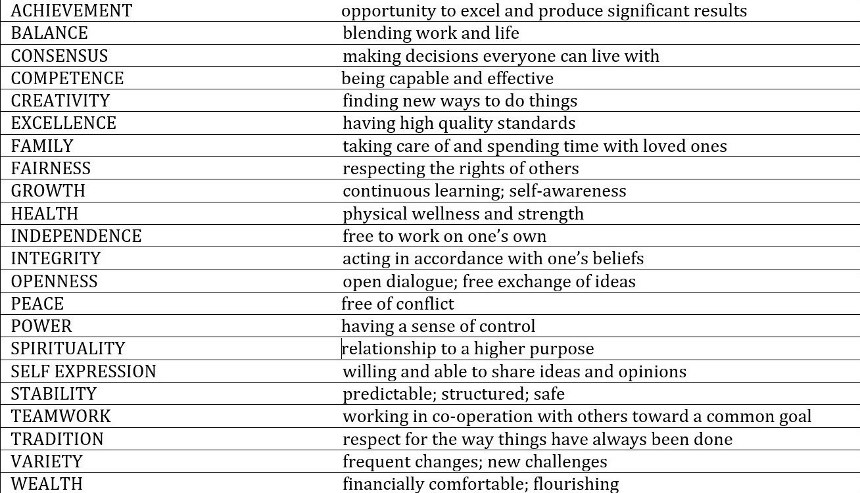Negotiations and Relationships
Learning Outcomes
This section deals with the importance of building interpersonal business relationships and maintaining them even in difficult negotiation situations in English.
Successful negotiations depend on proper and respectful communication strategies and styles, used in conjunction with a sound knowledge of one’s products and services, one’s organizational processes, as well as their related possibilities and constraints. That is why you should also visit another study section called Intercultural Meetings and Negotiations.
From chapter 9 in the e-book, you should have been introduced to the background of this study section.
Remember the learning outcomes, which we will also focus on in this study section:
LO1: The concept of NASAFS and its use in business situations.
LO2: The differences between Competitive and Principled negotiations.
LO3: What makes a good negotiator and how such an expert may grow business opportunities.
LO4: The different styles a negotiator may use and their impacts on a business relationship.
NEVER ABOUT SOMETHING, ALWAYS FOR SOMEONE
NASAFS appears at first glance to be a simple concept, but it includes many elements: the Six Human Needs, No Man (or Woman!) is an Island, the Double Perspective and a large dose of Common Sense.
Below, you will be introduced to these elements in detail.
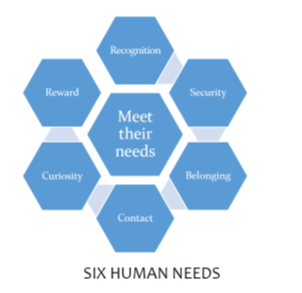 The Six Human Needs: Basic needs, yet also applicable to communication and personal interaction during business negotiations
The Six Human Needs: Basic needs, yet also applicable to communication and personal interaction during business negotiations
The Six Human Needs were developed in response to customer communication problems in former Soviet Bloc countries after 1990, when customer complaints were severe.
Owners of restaurants, hotels and wellness centers, such as spas, were supplying their customers and guests with what they had ordered, but they were still left feeling unsatisfied or cheated by their hosts. What was the problem?
- Recognition: customers felt treated as ‘just another face with a wallet’. People want to be treated as individuals, and to feel respected. They do not want to be told that their names are ‘difficult to spell or pronounce’.
QUESTION: How have you felt disrespected as a customer?
- Security: customers did not feel that they or their belongings were safe. For example, there were no safes for their valuables or no lockers to lock up their belongings at the swimming pool, no security for their cars in the parking lots or n nighttime receptionist available.
QUESTION: How have you felt unsafe or insecure about your belongings when using hospitality services?
- Belonging: returning customers did not feel appreciated, getting frowns or not being greeted appropriately upon arrival.
QUESTION: what changes have you noticed in customer service where you shop, do business?
- Contact: customers at hotels felt that they were only ‘cared for’ upon arrival and departure, when settling their invoices. But what about in between? Customers wanted, when crossing the lobby or departing the breakfast room, to be asked about their stays, their meals, their satisfaction.
QUESTION: how can the human need CONTACT be applied in business dealings with customers, suppliers, partners?
- Curiosity: customers are always looking for that ‘little something extra’, and if they can be made curious as to what that something is, then a business has their attention. The outcome is that the customer is made to feel appreciated. For example, hotels could place an attractive card on the reception desk reading: “WANT FREE WIFI AND FREE USE OF THE MINI BAR IN YOUR ROOM? ASK US HOW!” That would get any hotel guest’s attention, and the reward of asking – “Just fill in our Honor’s Club registration card and the free services are yours anytime you stay with our hotels” – will put a smile on the customer’s face.
QUESTION: can you name specific examples where such a tactic has worked when you were the customer?
- Reward: customers often missed the simple – but necessary! – appreciation of statements, such as: “Thank you for staying with us!”, “Enjoy your stay!”, “Enjoy your meal!” There are also the rewards of free mints at a reception desk, but many kinds of businesses use freebees to make customers feel appreciated, while simultaneously advertising themselves.
QUESTION: How have businesses rewarded you as a customer that you particularly liked?

This is a picture of a glass of beer and some lasagna, served on a paper plate. The customer got what was ordered, but does the customer feel good about what he got?
No Man (or Woman!) is an Island
Human beings necessarily depend on one another, especially in the world of business.
A salesperson can make a sale, but what if the customer is promised a delivery date that cannot be actually met because Procurement cannot get quicker lead times on raw materials from suppliers and Scheduling has spoken with Production, and there are no available production lines for the time period needed to assemble the sold product?
In other words, no company can run without the cooperation of and among the human beings who work there.
In negotiations involving sales, one must always be mindful of those other stakeholders who are not physically in the room at the moment, but who are not only affected by the outcome of what you promise the customer, but who can also affect the ability to make any agreement stick.
 The Double Perspective
The Double Perspective
Consider the image of the human hand above.
If you hold your hand in front of you in the same manner, you would see the back of your hand, while any person in front of you would see the palm of your hand.
Same hand; different perspective.
That is what the Double Perspective is all about.
People in a negotiation do not see everything the same way or from the same perspective.
The ability to come to an agreement on a common definition, standard or measurement can be the key to getting to a contract.

BAD INTERNAL CUSTOMER SERVICE VIDEO EXERCISE
Instructions
- Before watching the video below, read through and carefully consider the questions below.
- Watch the video, without worrying about having to answer the questions. Just observe and listen.
- Re-watch the video and try to answer the questions.
QUESTIONS
Who is the internal customer in this video?
How does each character behave towards his/her co-workers?
Which of the 6 Human Needs is not being met?
3.1 Recognition
3.2 Security
3.3 Belonging
3.4 Contact
3.5 Curiosity
3.6 Reward
How does the concept of NASAFS apply / not apply here?
What type of meta-communication / body language / communication styles does each character use?
How is the concept of “No man is an island” show itself in the video?
Are any bridges being built by any of the characters? How?
Where / what type of conflict develops? How does each character function to worsen / alleviate conflict?
Where do you see the idea of double perspective?
What emotions are used and how?
How are complaints made / handled?
How do the characters interact, respond to what the other is saying?
Do the characters choose their words carefully? Examples?
Used with kind permission of Mr. Tim Grantham, who wrote, directed and stars in it as the gentleman with the goatee and glasses.
What makes a good negotiator?
A list of skills that beginner negotiators can be taught to become more proficient:
1. Acknowledge the position of the other party
2. Use active listening techniques
3. Adopt effective questioning techniques
4. Accurately interpret nonverbal communication
5. Use collaborative communications
6. Think creatively to find win-win conflict resolution strategies in lieu of the more common competitive or win-lose tactics
Below is a checklist for beginners to negotiating in business:
1. When is the negotiation taking place? Are there fluctuations in the business cycle, demands on cash flow or other factors that will affect the deal?
2. How much time does one have? Progress accelerates when either party approaches a deadline.
3. What are the issues to be negotiated? An issue is anything that has value to either party. The more experienced one is, the more issues one will see.
4. What issues should be avoided? While one must be ready to discuss issues one would rather not, one should never bring up any issue in which one has a weak position.
5. How should issues be ranked? Rate the importance of issues by dividing them into three categories:
Need to Have (one would not even consider a deal without them), Nice to Have (one would go to lengths to get them), and Trade-off (something one can use to bargain with).
6. What are one’s limits? Does one have the authority to make the deal? Enter a negotiation with the highest level of authority possible, as this brings with it confidence. One should not, however, admit to absolute authority. One should be able to express a need to consult with “others.”
7. What are the facts? The more one knows about the other side and the deal itself, the more effective one may be. Ask questions constantly.
8. What is the other side’s point of view? Spend time trying to see the deal through the other side’s eyes. How do their negotiators view one’s own side? What issues will they raise? What is important to them? How badly do they need the deal? Can they walk away from it?
9. What does one know about the other negotiators? What are their attitudes, beliefs, and styles? How do their characteristics differ? Are they effective?
10. What outside influences will affect the negotiation? Know how these things will concern the deal: current market conditions, laws and regulations, actions by competitors, shortages of materials or supplies, actions by a foreign nation, the stock market, politics, unions, or personal problems of the negotiators.
11. What is acceptable? Lay out the best possible deal and what is needed, at minimum, to come to an agreement.
12. What is the plan of action? Good negotiators should always seek to develop an ideal agenda that encompasses what one would like to discuss first, second, and last. Avoid settling minor issues at the outset; their value can shift as the negotiation proceeds.

Competitive versus Principled Negotiations
Principled Negotiation is a style of negotiating introduced by Roger Fisher and William Ury, in their book titled Getting to Yes (Penguin: London, 1981) Their approach includes four fundamental principles of negotiation and three obstacles often faced in any negotiation process. Fundamentally, the goal of employing Principled Negotiation is to create a “win-win” deal, in order to achieve one’s business objectives, while also attempting to meet the expectations of one’s counterparts. In essence, unlike the more traditional competitive negotiation style, the all-or-nothing attitude is abandoned for one that seeks to create new business opportunities for all parties involved in the negotiation.
- 1st Fundamental Principle: Separate People from the Problem
Emotion, communication and perception just get in the way of clear-headed thinking. When a negotiator feels disadvantaged, s/he often will react with emotions such as fear or anger. Fisher and Ury argue that emotion-centered or emotion-driven styles can lead to overreactions and poor decision-making, which lead to sulking, threats, miscommunication, poor communication and even insults. Blaming others for how one feels causes negotiations to fall apart. When emotions and perceived threats get in the way, people talk around each other, rather than listening to what the other person is actually saying. Therefore, Principled Negotiations advises parties engaged in negotiations to try to put themselves in the other person’s situation and to think of each other as partners, not adversaries.
- 2nd Fundamental Principle: Focus on Interests
Principled negotiation, as a style, would have negotiators focus discussions on identifying common interests, instead of focusing on one’s position on a particular subject, such a price. If one only focuses on one’s own position, then one’s communication with the other party implies that their views on the same subject are not as important as one’s own. For example: If a buyer wants a supplier to give them a discount based on the volume of an order, rather than focusing on the percentage of the desired discount, open discussions on whether there are other ways to save money by buying from that supplier. It could turn out that the supplier can reduce packaging, insurance and shipping costs on a larger order or even offer a very favorable discount on one’s future orders. In every case, Principled Negotiations state that the negotiator must always first identify the interests of all parties involved regarding every issue. Learning to ask the right questions to discover motivators behind positions can identify any number of interests behind those positions. By shifting the discussions to focus on those interests, it can be easier to actually arrive at a resolution.
- 3rd Fundamental Principle: Generate Options
Identifying options during a negotiation creates ‘wriggle room’ for the negotiator. If a negotiator feels cornered or trapped on any subject, they can become emotional, irrational or even choose to break off the negotiation altogether. Therefore, it is in the interest of all parties to generate a range of options for the possible solution to all items being negotiated, wherever possible. This process is also known as brainstorming, which can even be done more informally, over coffee or lunch. This process should involve focusing on honestly stating the problem, analyzing it, taking general approaches to resolving it and allowing for specific actions to achieve mutual satisfaction with the chosen solution. During this phase, optimist thinking should be used. Pessimism and cynicism only get in the way.
- 4th Fundamental Principle: Use Objective Criteria
Principled Negotiations mean that parties should use objective criteria, especially whenever tough, direct opposition is met with at the negotiating table. By objective criteria, Fisher and Ury mean the use of a legal precedent, scientific studies or industry statistics/standards, in order to provide the negotiating parties with the ability to agree to the validity of important information which can be used to drive the negotiation forward. This can be crucial during e.g. negotiations on quality. Whenever both sides identify a standard they can both agree to, then subjective opinion is removed from that portion of the negotiation. As one example, a company is negotiating the sale of a warehouse it no longer needs and the prospective buyer offers €125,000, but the seller wants €165,000. If according to the average property listings in the same area for warehouses of the same size and condition, warehouse prices average between €140,000 – €160,000, then both parties might be able to agree to €135,000 – €155,000.

Negotiation exercises
 In pairs, read the negotiation situation you are given from the 3 below. Then using the skills listed under What Makes a Good Negotiator and Principled Negotiations to prepare for your role play.
In pairs, read the negotiation situation you are given from the 3 below. Then using the skills listed under What Makes a Good Negotiator and Principled Negotiations to prepare for your role play.
Role Play Exercises, Part 1
- Your wife comes home to inform you that her mother has become too ill to take care of herself. She will have to move in with you, as there is not enough money to afford a retirement home. You have never gotten along with your mother-in-law. Have the conversation.
- You share a flat with a colleague from the office. Recently, he got a new girlfriend. No problem, right? But there is a problem: she has started staying in the flat. Your roommate claimed it would only be for a night once a week, but she has been living there for days now. She uses the electricity, water, turns up the heating, eats the food – yet, when the bills had to be paid, your roommate had no problem paying only his 50% of the bills. Moreover, he avoids the issue when you ask him how long she would really be staying or whether he thinks other living arrangements would be better. Have the conversation.
- Your child has a beautiful new cat, which s/he adores. What your child hasn’t noticed is how much you are suffering: you have a cat allergy you had never experienced before. You itch all over, your eyes water and your nose is stopped up. Your spouse sent you to the doctor to try some medication, but the doctor recommends you get rid of the cat. That’s right: Kitty has to go. You don’t want to be the monster here. You want your spouse to sit down with you and the child to support you and make this easier. Have the conversation with your spouse.
Negotiation styles: Many choices, but the choice is yours.
Role play exercises, Part 2
Now, prepare and re-role play the exercise you received previously in each of the 5 negotiating styles, according to the AACCC model above.


